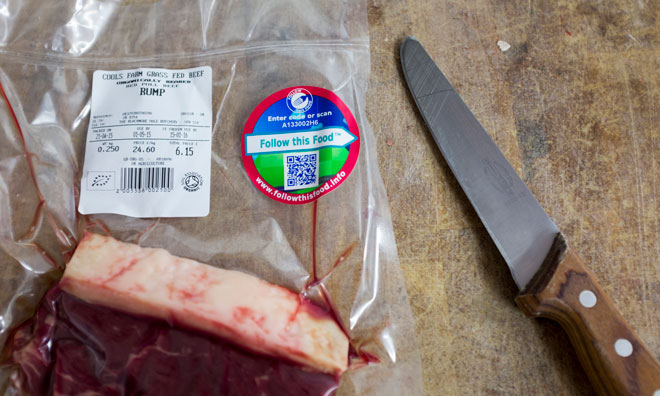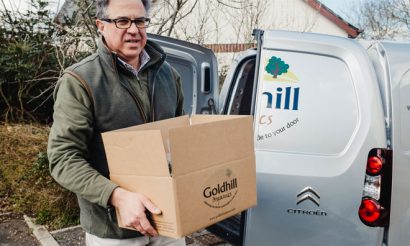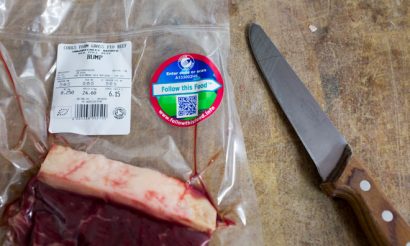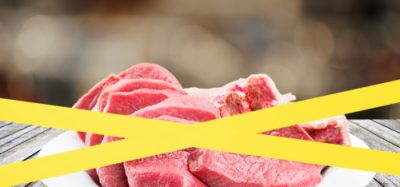Defeating fake food with 21st century active labelling
- Like
- Digg
- Del
- Tumblr
- VKontakte
- Buffer
- Love This
- Odnoklassniki
- Meneame
- Blogger
- Amazon
- Yahoo Mail
- Gmail
- AOL
- Newsvine
- HackerNews
- Evernote
- MySpace
- Mail.ru
- Viadeo
- Line
- Comments
- Yummly
- SMS
- Viber
- Telegram
- Subscribe
- Skype
- Facebook Messenger
- Kakao
- LiveJournal
- Yammer
- Edgar
- Fintel
- Mix
- Instapaper
- Copy Link
Posted: 18 October 2016 | Martin Coates, CEO Agrantec | No comments yet
CEO of Agrantec, Martin Coates details the importance of active labelling and following the food from farm to fork at every step of its life…


Every day we read stories of food fraud and fake food. Fraudulent labelling of produce, fake farms created for cynical marketing purposes, bizarre processing techniques, mislabelled ingredients – nowadays it is very hard to know what you can really trust.
In theory food labels should help consumers understand what’s inside the packet. Food labels certainly tell a story. But often they are horror stories, written in an incomprehensible alien language.
When food fraud is so rife, it’s probably time to ditch old-fashioned passive labelling altogether and move to a more modern approach using a new system called active labelling.
Active labelling literally follows the food from farm to fork at every step of its life.
An active label would allow shoppers to know if their produce had been subjected to any weird processing techniques, such as:
- Meat gluing: meat glue is an enzyme used to join proteins together – literally to glue pieces of meat to each other to create one single piece of protein. Even famous chefs such as Heston Blumenthal use meat glue to help create novel dishes like pasta made from 95% shrimp.
- Air whipping: not all ice creams are actually allowed to be called ice cream any more. Some brands use a process called ‘air whipping’ to increase volume – while decreasing the weight. Air whipping allows as much as a 20% reduction in ingredients for the same volume.
- Wood pulping: wood pulp (aka cellulose) gives food more water and airiness, leaves a creamy feeling in the mouth, and creates a higher profit, but doesn’t give consumers anything more nutritious than extra bulk. Pretty much anything labelled ‘added fibre’ probably has cellulose in it.
- And coming soon… faux meat: a Silicon Valley invention that grows meat in vats without using animals. Bill Gates and Google have invested several hundred million dollars into firms making an enzyme that mimics a natural substance that makes blood red, and helps give meat its distinctive metallic flavour when cooked.
Most of these processes are regarded as safe. But are they really things you want to feed to your family? Is that really quality produce, suitable for children and babies? Most people would say “no!”


So how do you really, truly know what you are buying?
Checking the small print of a passive label typically leaves you none-the-wiser. Many industry terms are completely baffling to the everyday shopper. The UK government has been pushing for country of origin labelling, but that is little more than a marketing exercise. And anyway, shouldn’t it be possible to track each package like a delivery parcel in this modern day and age?
Active labelling literally follows the food from farm to fork at every step of its life…
This is where clever technology and your smartphone can help. At Agrantec we have invented a new system called FollowThisFood. FollowThisFood allows you to trace a product all the way back through the production chain to the farm and farmer by scanning the item with your smartphone directly on the supermarket shelf.
Instantly you can see the entire life cycle of that individual package directly in the palm of your hand. You can find out where and when it was produced, the name of the farm and farmer, even the storage temperatures en route to the shop. You can download FollowThisFood from the app store of your smartphone.


Reputable producers like Cools Farm in Wiltshire and Goldhill Organics in Dorset are happy to use FollowThisFood, as it helps explain exactly, step-by-step, why their excellent produce is of higher quality and therefore may cost a little more than junk or fake food.
Only producers with something to hide will shy away…
So next time you are staring at a supermarket shelf and wondering what that shiny label for some fake farm actually means, see if you can spot a FollowThisFood label instead. Scan it and find out exactly who made that specific package, and where it has been on its journey into your shopping basket. The system is free to use for consumers.
And if you know of an ethical local producer who might like to let consumers know about the care they take over their produce, point them to FollowThisFood.








